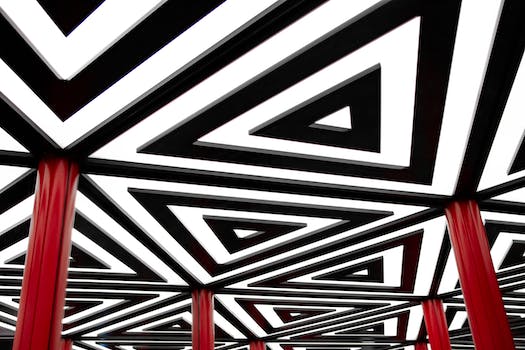The Future of Graphic Design: Trends to Watch
Introduction: The Evolution of Graphic Design
Graphic design has evolved significantly over the years, from handcrafted designs to digital creations. Its roots can be traced back to ancient cave paintings and Egyptian hieroglyphics. As technology advanced, graphic design shifted towards print with the invention of the printing press. In the 20th century, it further evolved with the onset of digital technology, allowing for more intricate and dynamic designs. This constant evolution has made graphic design an integral part of our daily lives – from logos and advertisements to websites and social media. As we move into the future, it’s exciting to explore new trends that will shape the graphic design industry.
The Rise of 3D Design and Its Impact on the Industry
The rise of 3D design has revolutionized the graphic design industry. It has provided designers with a new level of creativity and innovation, allowing them to create more realistic and immersive visuals. This has not only enhanced the quality of designs but also increased client engagement and satisfaction. 3D design has also broadened the scope of the industry, with its use expanding from traditional areas like gaming and animation to sectors like architecture, product design, and even medical sciences. In essence, the advent of 3D design has made graphic design more versatile and impactful, setting new benchmarks for the future.
Augmented Reality (AR) and Virtual Reality (VR): The New Frontiers in Graphic Design
In the ever-evolving world of graphic design, Augmented Reality (AR) and Virtual Reality (VR) are emerging as the new frontiers. These technologies are revolutionizing the field, allowing designers to create immersive, interactive experiences that go beyond traditional 2D designs. With AR, designers can overlay digital information onto the real world, creating a blended experience. On the other hand, VR offers a fully immersive experience, transporting users to a completely different, virtual environment. As these technologies become more accessible and widespread, they’re set to redefine the future of graphic design, offering endless creative possibilities.
The Emergence of Responsive Design and Its Future Implications
Responsive design has significantly shaped the landscape of graphic design in recent times. It involves creating websites that adapt and function effectively on different devices, ensuring a seamless user experience. With the rapid increase in mobile usage, responsive design has become more critical than ever. Looking forward, as technology continues to evolve, we can expect responsive design to incorporate advanced features like voice user interfaces, augmented reality, and artificial intelligence. These advancements will make interactions more intuitive and personalized, redefining the user experience. Therefore, mastering responsive design is no longer optional for graphic designers; it’s a necessity for staying relevant in this ever-changing digital era.

The Influence of Artificial Intelligence on Graphic Design
Artificial Intelligence (AI) is revolutionizing the graphic design industry in exciting ways. AI-powered design tools are now capable of creating stunning visuals, logos, and entire brand identities within minutes. These tools leverage AI algorithms to understand design preferences, analyze trends, and produce designs that are both creative and appealing. Such advancements are reducing the time spent on repetitive tasks, thereby giving designers more freedom to focus on strategic and conceptual aspects of their work. AI is not just transforming how designs are made, but also redefining the role of designers in the creative process.
Sustainable Design: A Growing Trend in the Graphic Design World
Sustainable design is rapidly becoming a significant trend in the graphic design world. This approach focuses on creating designs that are not only visually appealing but also environmentally friendly. It involves the use of eco-friendly materials, reducing waste, and minimizing energy consumption in the design process. For instance, graphic designers are now opting for digital mock-ups instead of physical prototypes to save on resources. They are also choosing environmentally-friendly inks and recycled paper for printing. This trend is driven by a growing awareness of our environmental impact and a desire to create a more sustainable future. As we move forward, sustainable design will undoubtedly play a crucial role in the evolution of graphic design.
The Shift Towards Minimalistic Design: Is Less Really More?
In today’s fast-paced digital age, a shift towards minimalistic design in graphic design is becoming increasingly noticeable. This design trend emphasizes simplicity and functionality, cutting out unnecessary elements and focusing on what truly matters. The mantra “less is more” is taking center stage, with designers creating clean, uncluttered designs that are easy on the eyes and effectively communicate the message. This minimalist approach is not just about visual appeal; it also enhances user experience by making navigation and comprehension easier. As we look to the future of graphic design, the trend of minimalism looks set to continue, changing the way we view and interact with design.
The Role of Data Visualization in the Future of Graphic Design
Data visualization is set to play a pivotal role in the future of graphic design. As we continue to generate vast amounts of data, the need for clear, easy-to-understand visual representations of this data is increasing rapidly. Graphic designers are now tasked with transforming complex data into visually appealing, digestible graphics and charts. This not only makes the data more accessible to a wider audience but also helps in making quicker, informed decisions. Hence, mastering data visualization techniques is becoming a crucial skill for graphic designers, making it a trend that’s here to stay.
The Impact of Social Media on the Evolution of Graphic Design
Social media has significantly influenced the evolution of graphic design. It has driven the demand for visually engaging content that communicates quickly. Graphic designers now create responsive designs for various devices and focus on maintaining brand consistency in a digital context. The rise of user-generated content and interactivity has challenged designers to produce more dynamic and interactive visuals. Data visualization and inclusivity have gained prominence, and trends spread rapidly on social platforms. Moreover, social media has created new career opportunities in design-related roles, making it a pivotal force in shaping contemporary graphic design practices.
Conclusion: The Future Outlook of Graphic Design Trends.
In summary, the future of graphic design holds promise and challenges. With emerging technologies like AR, AI, and VR, along with a growing emphasis on sustainability, personalization, and accessibility, designers must adapt and innovate. Collaboration, cultural sensitivity, data-driven decisions, and ongoing education will be key. As graphic design continues to evolve, its dynamic and diverse future is driven by creativity and a commitment to staying at the forefront of design trends.





